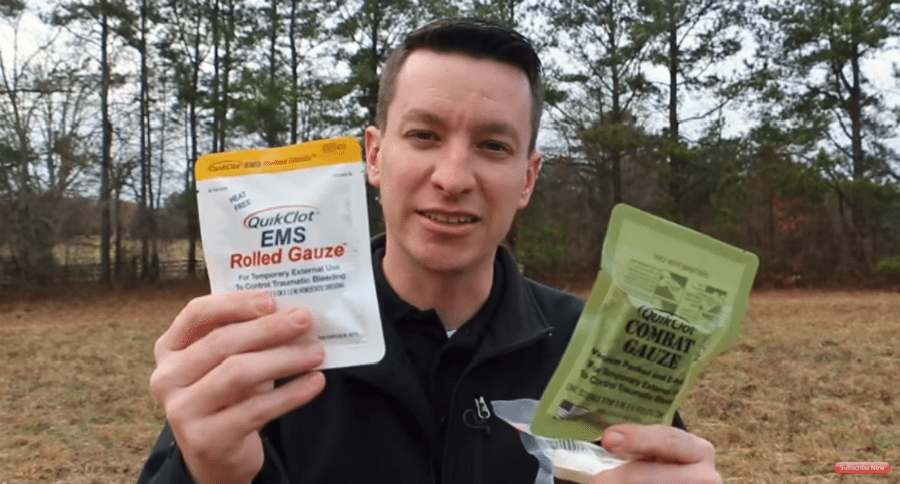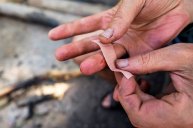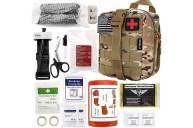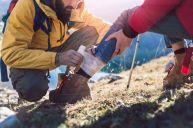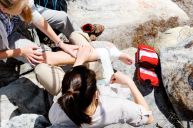Here's a list of what you should include in your hunting first aid kit, to allow you to effectively treat most injuries and medical situations in the field.
Hunting injuries are a common occurrence, and if you spend enough time in the field you're likely to suffer some sort of mishap, be it minor or significant. Carrying a first aid kit is just common sense and should be a part of every hunters field kit.
Here is an excellent list of items from Skinny Medic to include in your first aid kit. These items will take care of most injuries, big and small, and in the case of severe trauma, may save your life while you either wait for rescue or get yourself out of the woods and to a treatment center or hospital.
Watch the video below:
Items to include in your FIRST AID KIT:
- Tourniquet: Deep cuts, puncture or gunshot wounds are the most common injuries for hunters, and stopping blood flow is paramount. Skinny Medic recommends a bright, hunter orange colored tourniquet, as it may aid in helping others to see you and effect a rescue.
- Pressure Bandage: Also used to stop the bleeding on a wounded area. There are several options to choose from here, such as an Israeli bandage. It probably wouldn't hurt to carry a couple of these.
- Gauze: You'll need something sterile and large enough to cover a wounded area. Again, Skinny Medic presents several different options here, including the more affordable QuikClot EMS Rolled Gauze.
- Chest Seal: Puncture wounds to the chest or back areas are treated differently than wounds to the extremities, which can be treated with a tourniquet. A Chest Seal is small and well worth carrying in your kit.
- Survival Blanket: Small yet highly effective for keeping your core body temperature stable, should you go into shock or be in danger of hypothermia.
- "BooBoo" bag: A small ziplock baggie can hold items for small injuries or conditions. This should include a couple packets each of bandaids, Benadryl, aspirin for heart attack, Tylenol for sprains or other injury, burn cream, antibiotic ointment, bite/sting pads. He also includes a fine metal tweezers with an attached magnifying glass.
Store everything in a ziplock bag or a dedicated first aid kit bag. You may, however, want to keep your tourniquet in a pocket for quick and easy access.
Another item to consider and which is probably already part of your field kit is water. Having enough water to stay hydrated or wash a wound area is important.
Additionally, carrying an EpiPen is essential if you have allergies.
Please take the time to view Skinny Medics other videos dedicated to specific items in this kit. Knowledge is, of course, one of your best defenses in an emergency situation. Don't leave home without it, and don't leave home without a good first aid kit.
Like what you see here? You can read more great articles by David Smith at his Facebook page, Stumpjack Outdoors.
NEXT: NATURE DISENGAGEMENT SYNDROME: A MEDICAL DIAGNOSIS YOU NEVER EVER WANT TO HEAR
WATCH
https://rumble.com/embed/u7gve.v3v69r/
